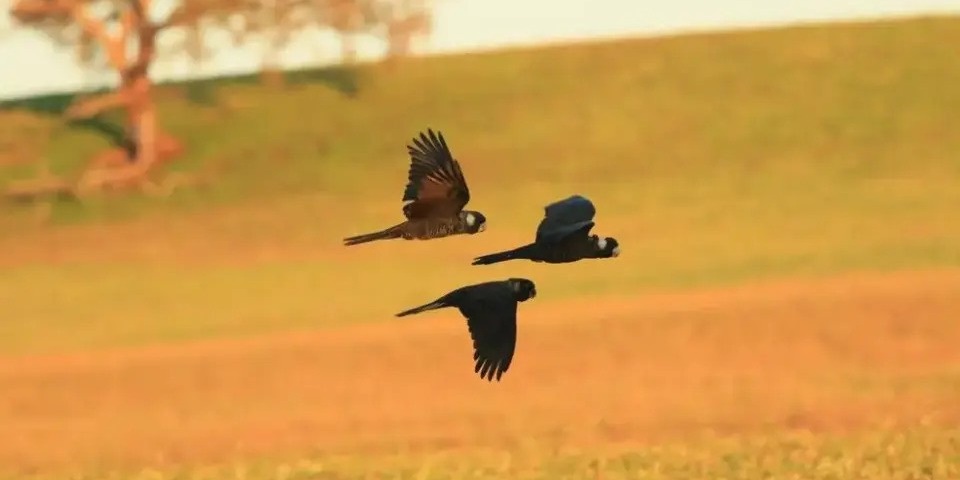Black Cockatoo Conservation management research
Western Australia’s three endemic black cockatoo species, Carnaby’s cockatoos (Calyptorhynchus latirostris), Baudin’s cockatoos (Calyptorhynchus baudinii) and forest red-tailed black cockatoos (Calyptorhynchus banksii naso) are threatened and receive special protection as Matters of National Environmental Significance (MNES) under the Environment Protection and Biodiversity Conservation Act (1999).

Black cockatoos are iconic species in the Western Australian landscape. People hold strong cultural associations with them, and they are well placed to function as flagship species for habitat conservation. All three species are confined to areas of suitable habitat in the south-west of Western Australia, including populations on the Perth-Peel Coastal Plain, northern jarrah forest and south-west forests of Western Australia.
Threatening processes for Western Australia’s black cockatoos are exacerbated by the rapidly increasing urban and industrial development in the Perth-Peel region and the south-west of Western Australia. Perth’s human population is projected to nearly double to 3.5 million by 2050, emphasising the need to understand flock movements, habitat use and identify critical feeding and breeding sites to enable conservation management of these threatened black cockatoo species.
114
Cockatoos tagged
87,000km
Tracking data
16
Research publications
What we do
Health and demographics
The Murdoch University research team undertake research to investigate potential threatening processes in relation to the health and demographics of black cockatoos. The health research on Carnaby’s cockatoos aims to better understand the potential role of disease as a threatening process for this species. Additionally, the research team is investigating different methodologies to age black cockatoos. The ability to age wild birds to understand age structure has significant conservation application, and can help inform population viability analyses.
Habitat protection
Major threats to species survivorship for these black cockatoos include habitat loss and modification, urban and industrial expansion, disease, displacement by competing species, and climate shifts. The research team is in a strong position to work alongside government to identify high-use habitat areas for black cockatoos, and to inform decisions regarding which areas are most appropriate to conserve and manage in order to halt and reverse black cockatoo population declines.
Movement ecology
Our researchers
Professor Kris Warren and Dr Jill Shephard have been studying the health, ecology and demographics of Western Australia’s three species of black cockatoos for over 10 years. The research team comprises wildlife veterinarians and ecologists, and the team works in partnership with the following organisations:
- WA Department of Biodiversity, Conservation and Attractions (DBCA)
- Perth Zoo
- Kaarakin Black Cockatoo Conservation Centre
- Birdlife Australia
- World Wildlife Fund-Australia
- WA Museum
- Federal and State government agencies
- Industry groups in the forestry, mining and housing sectors
